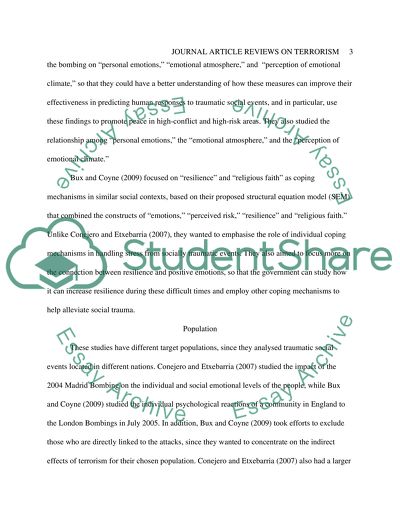Cite this document
(“Journal Article Reviews on Terrorism Essay Example | Topics and Well Written Essays - 1750 words”, n.d.)
Retrieved from https://studentshare.org/psychology/1430949-2-journal-article-reviews-on-terrorism
Retrieved from https://studentshare.org/psychology/1430949-2-journal-article-reviews-on-terrorism
(Journal Article Reviews on Terrorism Essay Example | Topics and Well Written Essays - 1750 Words)
https://studentshare.org/psychology/1430949-2-journal-article-reviews-on-terrorism.
https://studentshare.org/psychology/1430949-2-journal-article-reviews-on-terrorism.
“Journal Article Reviews on Terrorism Essay Example | Topics and Well Written Essays - 1750 Words”, n.d. https://studentshare.org/psychology/1430949-2-journal-article-reviews-on-terrorism.


